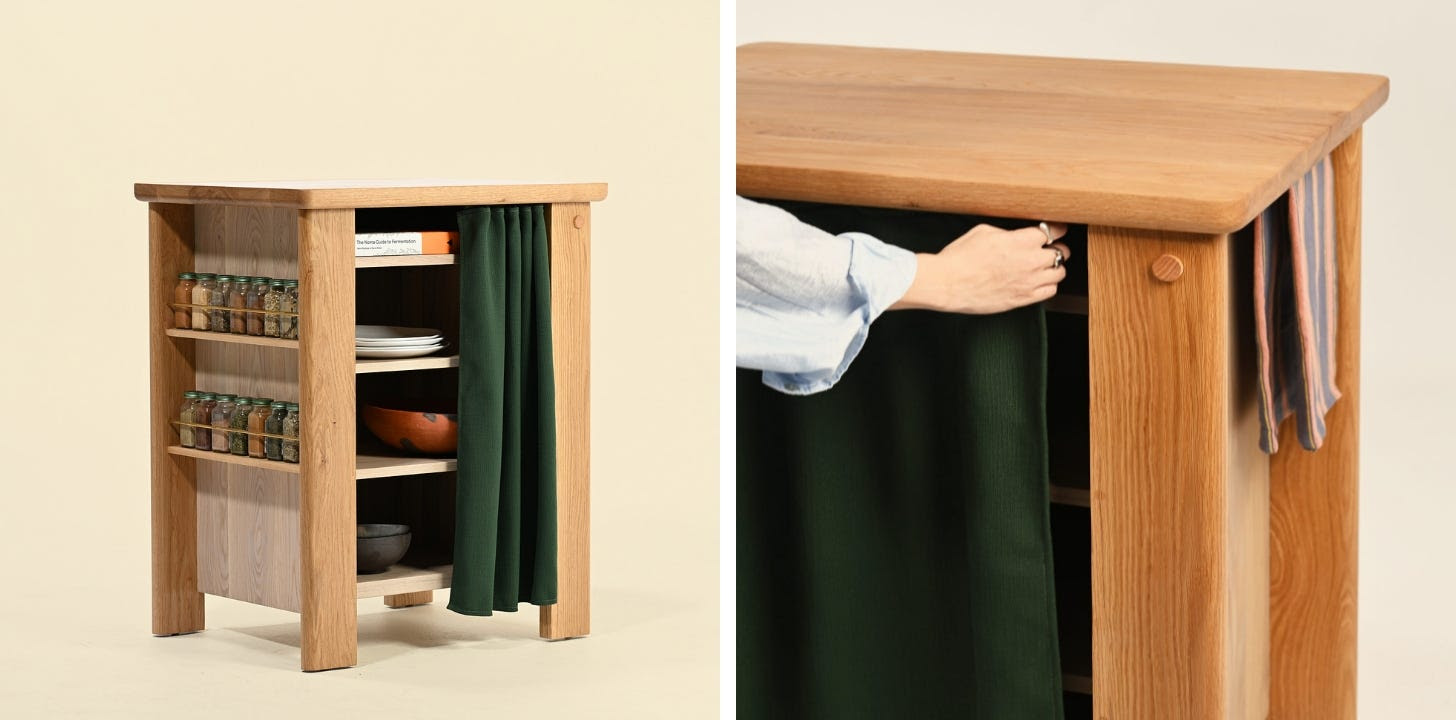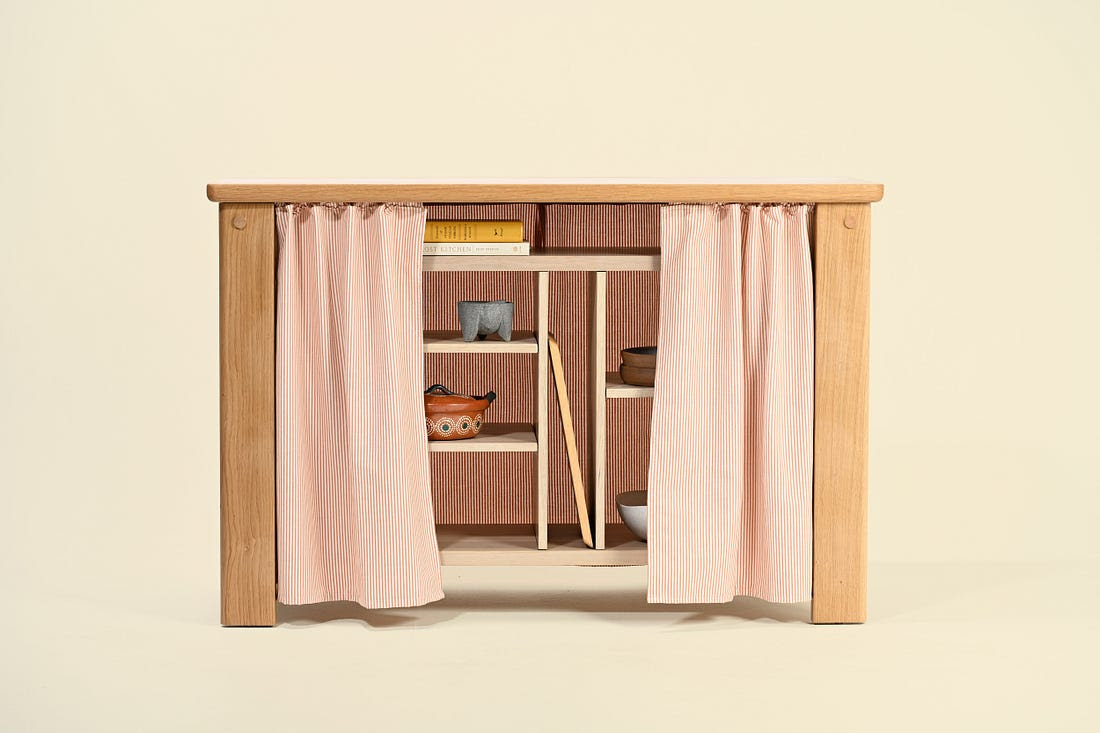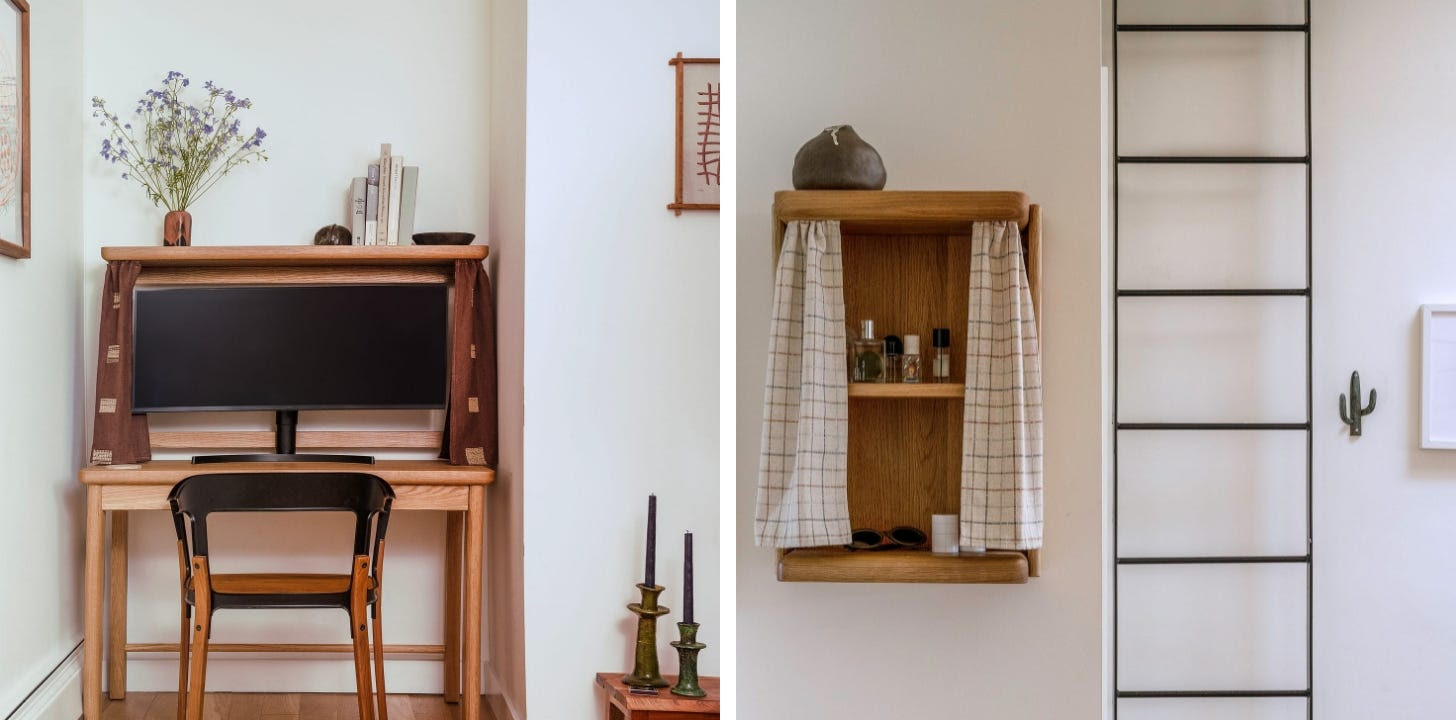.png)

Steph: I studied interior design in college, within the school of architecture where the first year is a shared foundation across architecture and interiors. That experience taught me to think spatially at every scale, but I quickly found myself drawn to the human scale: the objects, materials, and atmospheres people encounter most intimately. After working at several hospitality-focused design studios, I launched Ember Studio, my own interiors practice, which I’ve been running for just over three years. My work is rooted in creating tactile, emotionally resonant spaces, with a focus on high-end residential projects—and a growing interest in hospitality. I also design and sell a small furniture collection through Ember Studio at a gallery called Colony in Tribeca, blending my love of interiors with hands-on material exploration.
Nick: For me, it all started with feeling powerless and wanting to do something about it. A family member got sick, and suddenly we were navigating a complex system that didn't feel human. I started looking into who could improve that experience and discovered that designers were often the ones reimagining how these systems work. That curiosity led me to designing products and services across healthcare, finance, transportation, and eventually, the rhythms of everyday life at home.
We used to show up to dinner dates with a roll of vellum paper and just... start sketching. Right there on the table, between appetizers and main courses. The couple next to us would be having some deep talk, and we'd be frantically drawing cabinet details and debating wood joints. Very romantic, actually.
When we moved in together, our apartment became this ongoing design experiment. Our kitchen was basically a hallway with a sink, and our desk was shoved into the corner of the living room. So we started building solutions, not just because we thought we'd sell them, but because we needed them to exist.
The first time someone saw our kitchen setup and said "I need that exact thing," we realized we weren't the only ones living in beautiful but completely impractical NYC spaces. Steph had already connected with incredible makers through Colony's Designers Residency, so we had this network of people who could actually build the ideas we were sketching over dinner. It felt less like launching a brand and more like sharing a secret we'd figured out with the wider world.

The infrastructure, but you have to dig for it. There's this incredible network of people and resources here: someone who can help you prototype, someone else who knows a showroom, another person connected to the perfect craftsperson. But it's not obvious. You have to listen, ask questions, follow threads.
We've learned that the magic happens in the connections between things. Steph's relationship with Colony opened doors we didn't even know existed. A conversation at someone's opening leads to meeting a maker who becomes essential to your work. The city rewards you for showing up and paying attention.
And there's this underlying energy of everyone hustling in the best way: making stuff, launching things, supporting each other's projects. You'll have three gallery openings and two pop-ups to choose from on any given Thursday. It feels vibrant and celebratory, like creative ideas are constantly flowing through the streets and you just have to tune in to catch them.
It's like having multiple conversations going at once! They all start influencing each other in weird ways. The whole curtain concept actually emerged from this need to transition between different rhythms of the day. Work mode, dinner prep mode, entertaining mode: we wanted furniture that could shift with us instead of staying static.
The Veil Desk was our first attempt at solving this. You literally close the curtain on your workday and suddenly you have a symbolic and ritual based closure to one part of your day to flow into the next.

We're obsessed with all of it, honestly. The kitchen islands solve this very human problem of how to live beautifully when life is inherently messy. But our Nook Curtain Table has been equally transformative. It's a bedside table that can mount to the wall or sit on legs, and it's completely transformed how we think about bedroom storage, entryways, perfume vanities and display. Phone chargers, reading glasses, the random stuff that usually clutters your nightstand: all disappears behind this simple curtain, and it serves as a whimsical entryway shelf also.
The Hearth Island and Hearthlet come in multiple different curtain options, and people use them for everything, coffee stations, home bars, Vinyl tables.The curtain element means each piece can transform throughout the day.
We're deep in development on even more ways to bring textiles into unexpected places. The craft, the softness, the way fabric can completely change a room's energy: we want that feeling everywhere.